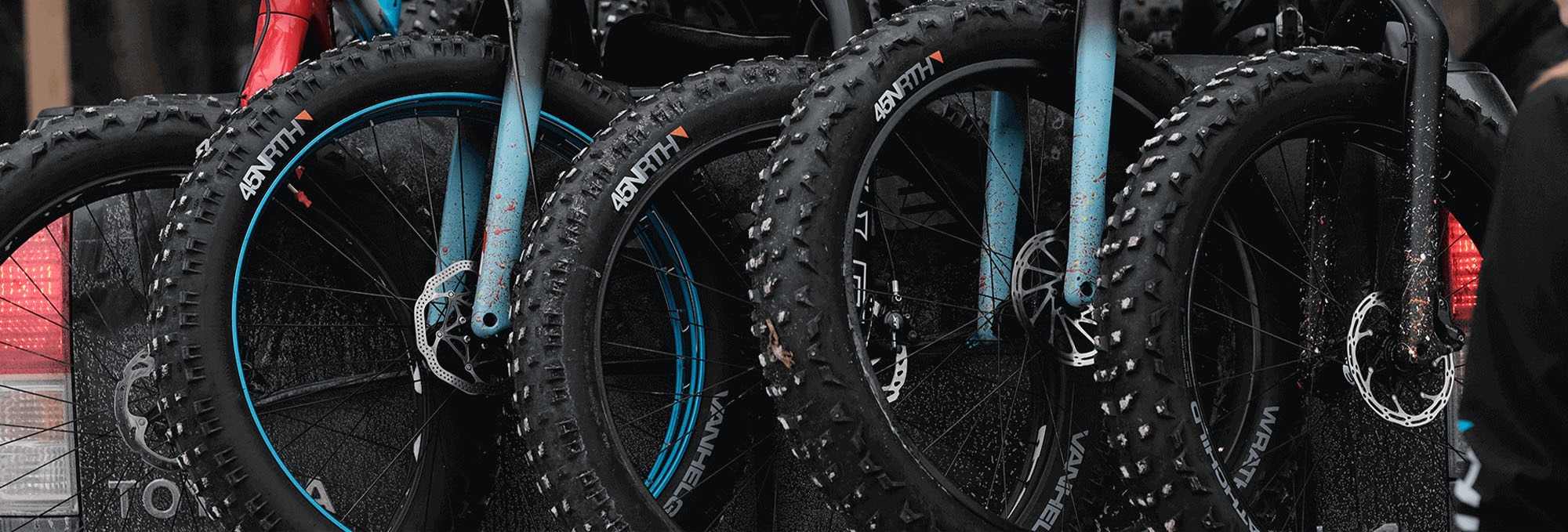Fat Tire Lifespan
Posted by Steve on 07/15/21
Last modified: 07/16/21

Fat Tire Cost And Benefit
If you’re new to the fat tire world, there’s one thing you might have noticed: fat tires are typically priced well above your average road or mountain bike tire. This is because fat tire manufacturing requires specialized molds and a lot more material. Fortunately, high-performance fat tires can last anywhere from 2,500–3,000 miles with normal use. Consider them an investment in expanding your riding season and improving your safety.
How Do I Make Fat Tires Last Longer?
Like any investment, you want to make sure your fat tires pay off in the long run. Fat tires are surprisingly resilient, but there are several things you can do to prolong their life.
Mind Your Pressure - While lower tire pressures (right on down to the low-single digits) are part of the magic of fat tires, they lead to lots of sidewall flex, which causes wear to the casing. Unlike your road or mountain bike tires, the sidewalls of a fat tire will likely wear out before the tread does. Likewise, over-inflation can also stress the sidewalls of your tires.
With this in mind, try to air down only when necessary for traction on loose trails. It’s a good idea to air up if you’ll be riding lots of pavement or firm surfaces, which brings us to our next point…
Terrain Matters – Riding on snow, sand, or soft trails will wear your tread less than asphalt, ice, or other hard surfaces. Consider where you ride most often before you buy tires—your tire choice for commuting might be very different than a tire that will only see snowy singletrack.
Keep it Clean – Wipe down your tires regularly with a clean rag and isopropyl alcohol to remove salty residue and trail debris. This is also a good time to inspect your tires for signs of damage or wear—most fat tires will show some cross-hatching on the sidewalls due to flex, but there shouldn’t be any openings in the sidewall.
Store Indoors – Excessive exposure to UV rays and temperature fluctuations can damage tire casings over time. Leaving your bike locked up outside the local café after a ride? Totally fine. Leaving it lying in the snow in your backyard all winter? Not so great.
We love riding fat tires year-round, but if you choose to swap out tires for the summer season or put your fat bike away altogether, it pays store your tires properly. Remove the tires from the rim and clean them with a rag and some rubbing alcohol, making sure to remove excess tubeless sealant (if applicable) from the inside and salty residue from the outside. Leave the beads unseated and store your wheels or whole bike in a cool, dry place away from direct sunlight. If you can, hang your tires up to get the rubber off the ground—this will prevent them from forming any permanent creases.
Conclusion
With a little time and attention, your fat bike tires will last you thousands of happy miles. If you have any more questions about fat tire operation, maintenance, or storage, reach out to us at info@45nrth.com.
